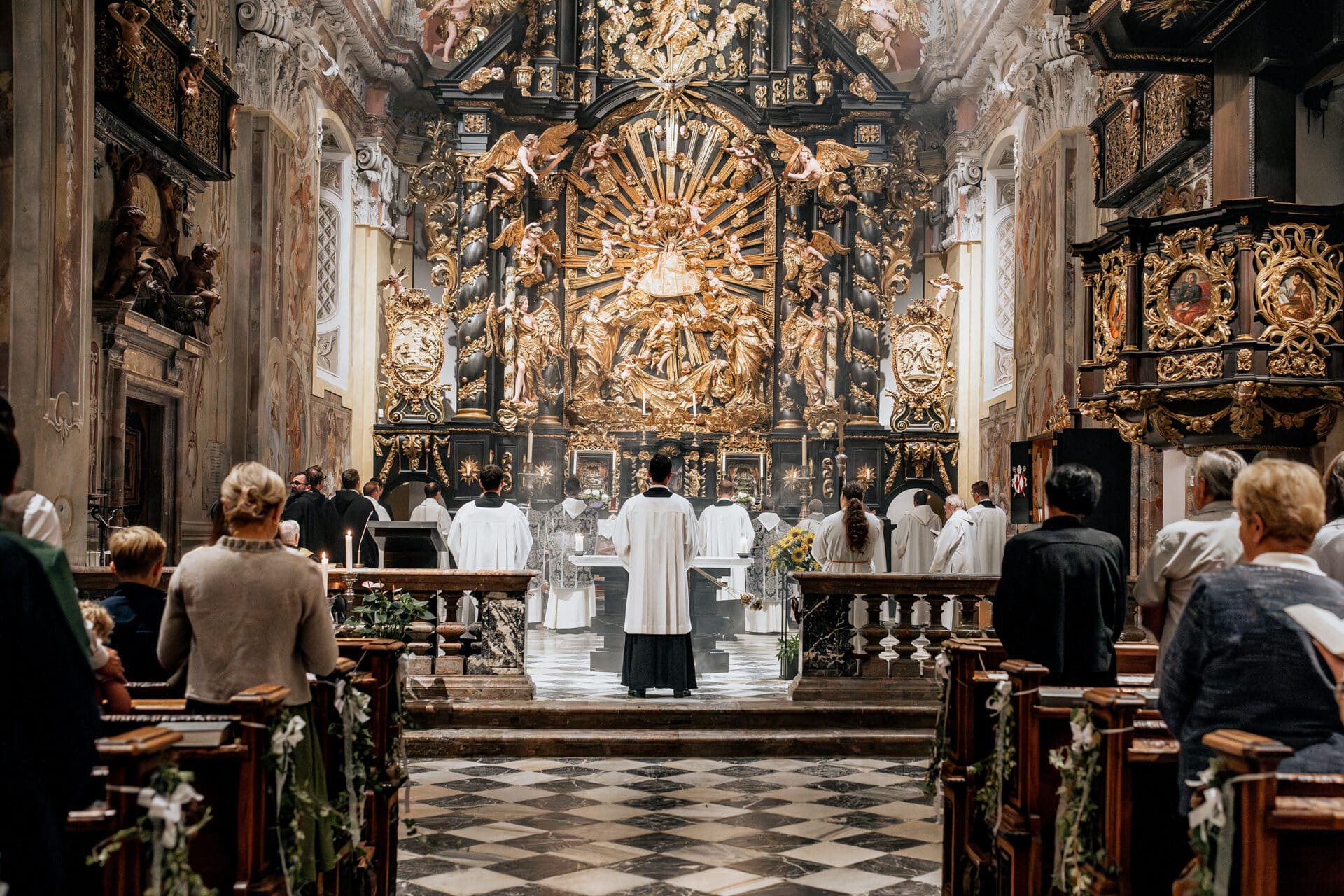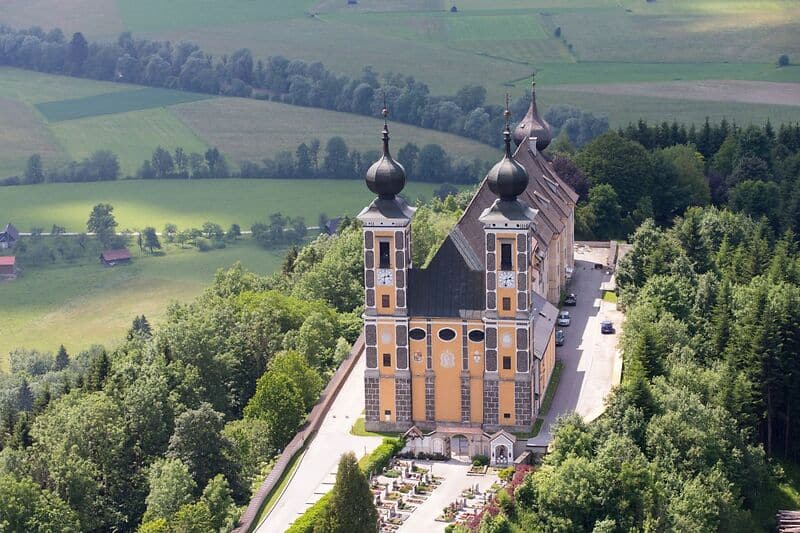
Architecture and furnishings
Sie sind hier: Home > Parishes > Parish Frauenberg an der Enns > Architecture and furnishings
Architecture and furnishings of the Frauenberg an der Enns parish church
Here you will find some information about our church
From the outside, the church and vicarage look like a single elongated, 100 metre long building. To the east, the church ends with two onion domes; the striking baroque wall structure is encrusted with cinder. In the style of a basilica, the church is a hall with four side chapels. The interior of the church was designed by Carlo Antonio Carlone around 1682, who modelled his design closely on the monastery churches that his father Pietro Francesco Carlone had designed for Garsten Abbey and Schlierbach Abbey.
The rich stucco of the barrel vaults is by Giovanni Battista Carlone. Antonio Maderni created the frescoes that fill the open spaces of the vault; they depict stations of the life of the Virgin Mary. There are frescoes by Johann Lederwasch (1794) on the walls of the choir and on its ceiling. The furnishings with altars, pulpit and confessionals are largely early Baroque. Martin Neuberg, a monastery carpenter from 1671 to 1714, created the three-storey high altar. The carved figures are the work of Josef Stammel. At the centre of the high altar is the Gothic sculpture of the Virgin Mary with Jesus in her arms. She is the actual miraculous image of the pilgrimage church. The sculptures (works by Josef Stammel) of Mary's parents, Joachim and Anna, act as assistant figures. The high altar is littered with depictions of angels and putti, most of which were created by Josef Stammel. The baroque pulpit on the south side of the presbytery is remarkable, with depictions of the four evangelists. The following altars (with thematically coordinated frescoes in the vaults) can be found in the four side chapels: Altar of the Cross (until 1786 the Altar of Grace) with a crucifixion painting by Johann Lederwasch, Altar of St Benedict, Altar of St Joseph and Altar of St Anthony with altarpieces by Frans de Neve.


The Pilgrim Madonna dates from around 1410 and was repainted in the 19th century. It is the oldest sculpture in the pilgrimage church and has been back in its original place behind the high altar since the interior renovation of the church. This is in keeping with an old tradition of the Frauenberg pilgrimage, according to which pilgrims are invited to circle the altar.
The original Frauenberg protective mantle Madonna, created around 1420/30, can be found in the Landesmuseum Joanneum (Graz). A copy is displayed in the candle chapel of the pilgrimage church. The rococo statues of St Rosalia, St Cecilia, St Barbara and St Catherine were created by Michael Zürn the Younger. The neo-baroque sessio in the chancel was created by the Upper Austrian artist Ludwig Linzinger. It was created in 1908 for the Bad Zell parish church and transferred to the ownership of the Frauenberg parish church in 2018.